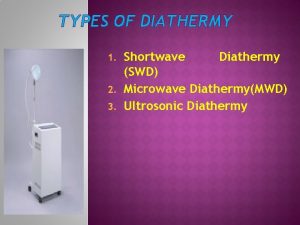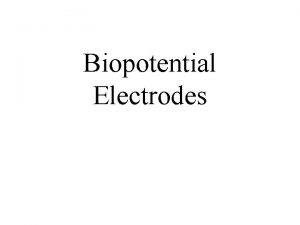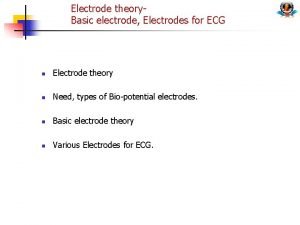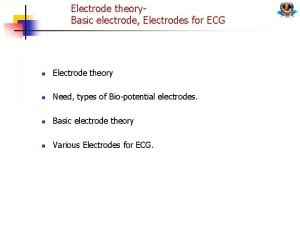Types of Electrodes and Electrode Reactions An electrode




- Slides: 4

Types of Electrodes and Electrode Reactions An electrode reaction means the net oxidation or reduction process that takes place at an electrode. The substances that receive and lose electrons are called the electroactive. This process takes place within the very thin interfacial region at the electrode surface. Ion-ion Electrodes Many electrode reactions involve only ionic species, such as Fe 2+ and Fe 3+. In order to avoid complications that would arise from electrode reactions involving this metal, a relatively inert substance such as platinum is commonly used. Such a half cell would be represented as The half-cell reaction would be 1

Gas Electrodes Some electrode reactions involve a gaseous species such as H 2, O 2, or Cl 2. Such reactions must also be carried out on the surface of an electrochemically inert conductor such as platinum. Similar reactions involving the oxidation of Br 2 or I 2 also take place at platinum surfaces. Insoluble–salt Electrodes A typical electrode of this kind consists of a silver wire covered with a thin coating of silver chloride, which is insoluble in water. The electrode reaction consists in the oxidation and reduction of the silver: The half cell would be represented as 2

Reference Electrodes The major requirements of a reference electrode are that it be easy to prepare and maintain, and that its potential be stable. The most common way of accomplishing this is to use an electrode reaction involving a saturated solution of an insoluble salt of the ion. This electrode usually takes the form of a piece of silver wire coated with Ag. Cl. 3

The other common reference electrode is the calomel electrode; calomel is the common name for mercury(I) chloride. The potentials of both of these electrodes have been very accurately determined against the hydrogen electrode. 4







